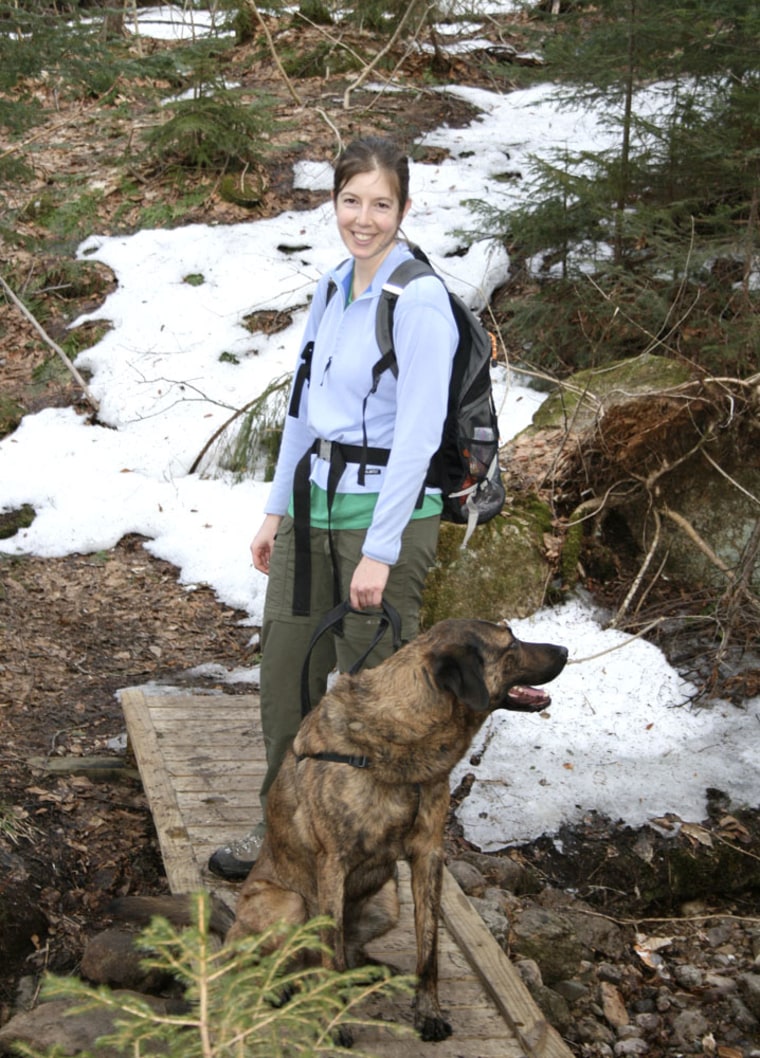The firetower looms white against cobalt sky at twilight atop Lyon Mountain, the thin walls around the tower's observation deck rattling in strong, chilly gusts of spring wind.
Having hiked the switchback trail to the 3,830-foot summit, the last half on snowpack, the last stretch alone, the platform five flights up is the final destination, with its promised view of Montreal. The steel tower anchored to the bedrock, just above the treeline, looks steady in the roaring wind.
The vista from the highest mountain in the northeastern Adirondacks, public property since November, turns dramatic at dusk. From the firetower, you can see the evergreen forest fade to black, the glimmering dark blue of Upper Chateaugay Lake and Chazy Lake, and the rim of reddish-yellow light from Montreal on the northern horizon. The deeper red of sunset drops away in the distant west.
Then the wind blows harder, encouraging you to descend the stairs, turn on a headlamp and look for bootprints in the snow under the surrounding scrub spruce. Find the trail and start down in the dark.
"This is a really popular spot," Connie Prickett said about an hour earlier. She had run into people on Lyon Mountain on every outing both summer and winter, but not on this Friday evening in mid-April, a shoulder season, with marks in the old snow from snowshoes, skis and hiking boots.
A former wilderness guide now with the Adirondack Nature Conservancy, Prickett had done bird surveys from the mountain, recording Bicknell's thrush, Swainson's thrush, winter wren, blackpoll warbler and white-throated sparrow.
"The first time I did it, I realized why birders go outside so early. I remember hearing more birds singing than I've ever heard before," Prickett recalled. On the hike down, near the bottom, Prickett, conservation scientist Michelle Brown and her dog Gordon met evening birds.
"There was this whole chorus of owls," Prickett said. "They just started hooting."
The conservancy sold the mountain and 20,000 acres to New York in November, adding most to the state Forest Preserve. The nonprofit also helped negotiate state conservation easements on another 84,000 of adjacent timber company forests, all part of the Sable Highlands.
The Department of Environmental Conservation has proposed a complex plan for the easement timberlands with public recreation like hiking, hunting and camping on 28,000 acres, leaving private hunting club leases intact on the rest but with some public corridors through them. There would be six snowmobile routes mainly on old logging roads, some open to all-terrain vehicles, with the public allowed to drive cars on five logging roads.

The deals permanently secured longtime hiking trails up Lyon Mountain and Owls Head 15 miles away, while preserving habitat for wide-ranging animals like moose, black bear, fisher and birds like the Bicknell's thrush that nests here and winters in the Caribbean. Public access to this corner of the 6-million acre Adirondack Park, about 140 miles north of Albany, had been limited.
Over 10 weeks, an Adirondack Mountain Club crew cut a new 3.5-mile trail to Lyon's summit with more switchbacks, taking hikers off the old direct 2.5-mile trail that was eroded to rock in places.
Most of the trails up New York's northern mountains were cut in similar straight lines a century ago, and they have eroded the same way.
The new trail crossed back and forth up Lyon with a gentler grade, horizontal and even briefly descending for stretches, crossing a pair of wooden bridges built over streams.
"We must be gaining elevation, even though it doesn't seem like it," Brown said as the hardwood forest of still bare maples and birches added firs and spruces. The trail went up a ridge, with a view of Chazy Lake in soft pale light. "I love this time of year that you can just see forever," she said.
The new trail reconnected with the old one near the summit. With the light fading, Prickett, Brown and Gordon, who was dragging a little, headed down, taking the old route straight, which Prickett knew well and which would be faster.
Later, having made the mistake of trying to do the same, instead of following the new trail marked with small red metal discs on trees along the way, I lost the trail once the snowpack ended. It meant bushwhacking in the dark among blowdown and through sometimes thick stands of saplings.
Using the headlamp, a compass to proceed more or less straight and turning east once in a failed attempt to find the new trail, I left the forest on a dirt service road at the bottom. That led, after walking a mile the wrong way and then two miles the right way, to the seasonal road that led to the trailhead and parking area.
